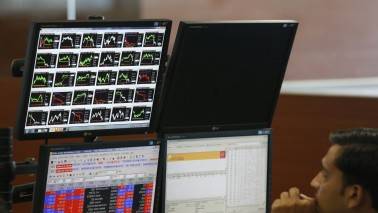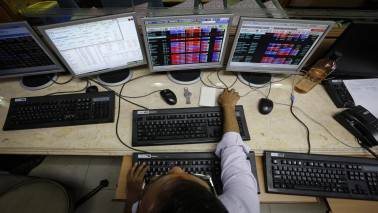India needs USD 8 bn stimulus to revive growth; 2 dilemmas confronting policymakers
The government has limited fiscal space due to a variety of factors like uncertainty on the quantum of indirect tax collections in the wake of massive supply chain disruptions and changeover to a new system in the wake of GST roll-out, which nearly halves the dividends from RBI versus last financial year.

Ajay Bodke
Prabhudas Lilladher Pvt. Ltd
Despite fervent pleas from various industry bodies and the government to lower interest rates and revive flagging economic growth, RBI has not budged and maintained a status-quo on the interest rates this week.
In its post-policy press conference, the Governor seems to have clearly enunciated his opposition to any fiscal stimulus by the government in view of what the Governor described as a large combined fiscal deficit of the Centre & States at 6% of GDP.
With no help from the monetary side, India’s policy makers are now left grappling with two tough dilemmas on the economic front to revive anemic growth impulses.
To Stimulate Or Not To Stimulate The Economy Fiscally:
With private sector capex remaining comatose, the government is understandably feeling compelled to pump prime the economy & provide a large fiscal stimulus of the order of at least Rs 50,000 crores (approximately US $ 8 billion) to revive flagging industrial & infrastructure growth.
Many core sectors like cement, steel, aluminum, heavy manufacturing etc. are operating at around 65-70% capacity utilization.
There is an urgent necessity for the government to provide a strong boost to aggregate demand which has been severally impacted due to destocking in the run-up to the implementation of GST.
We saw supply chain disruptions after the implementation of GST with companies still trying to come to terms with the new and cumbersome compliance regime as well as lingering effects of demonetisation.
Macro-economic indicators have weakened considerably with consumer inflation at 3.6% in August 17 at a five-month high, current account deficit at 2.4% of GDP in 1Q FY 18 at a four-year high, GDP growth at 5.7% in 1Q FY18 at a three-year low and Rupee slumping to a six-month low of Rs 66.71 to a US Dollar before a slight recovery.
The government has limited fiscal space due to a variety of factors like uncertainty on the quantum of indirect tax collections in the wake of massive supply chain disruptions and changeover to a new system in the wake of GST roll-out, which nearly halves the dividends from RBI versus last financial year.
There is likely shortfall in government’s ambitious disinvestment target and non-tax revenues like telecom spectrum proceeds as well as government exhausted nearly 96% of its budgeted fiscal deficit in the first five months of FY 17-18.
The announcement of a huge fiscal stimulus will strain the combined fiscal deficit of the Centre & States. Many States have announced massive farm loan waivers to the extent of US $49.1 billion straining their already-stretched fiscal positions.
The announcement of any fiscal stimulus will impact India’s desire for an upgrade in its credit rating over the medium term. It will also call into question government’s adherence to its medium-term fiscal consolidation plan.
To Allow or Not To Allow The Rupee To Weaken-
Before the recent slide, the Indian Rupee was amongst the strongest currencies on the back of strong FII inflows of around $20 billion in debt and $6 billion in equities since the start of CY 17.
An unusually strong exchange rate not only made Indian exports uncompetitive despite steadily improving global trade environment but has also hollowed-out India’s manufacturing sector with massive import substitution curtailing domestic output and worsening already-fragile job situation.
The RBI must urgently think of some measures to engineer a calibrated weakening of the Rupee. It could dissuade further foreign flows in government debt securities.
A weakening rupee would also prompt many companies to consider domestic borrowing by making it more attractive vis-à-vis ECBs i.e. external commercial borrowings (in a strengthening Rupee scenario many companies including those who do not have a natural hedge from export earnings tend to go for ECBs).
This would also aid currently anemic domestic credit growth.
Strong dollar inflows have forced the RBI into aggressive mopping up of those inflows and the consequent selling of Rupees has led to excess liquidity in the system.
As RBI is committed to maintaining consumer inflation around 4% this excess liquidity complicates RBI’s inflation-fighting mandate forcing it to sterilize by selling bonds and mopping-up this excess liquidity.
This sterilization operation entails its own costs. Also, massive forex reserves maintained by RBI are ending up earning a negative carry. Carry is the difference between the yield on investments and the cost of borrowing or returns earned on bonds & equities by foreign investors.
With global interest rates at record lows in view of trillions of dollars in quantitative easing by Global Central banks; RBI ends up earning a pittance by investing in foreign gilts and ends up paying significantly higher to foreign investors who invest in Indian domestic debt securities.
A weaker rupee would act as a bulwark against indiscriminate dumping of goods by some of our trading partners like China and help restore our competitive advantage vis-à-vis our trading partners who do not hesitate to use their currency as a tool to promote their exports & dissuade imports.
However, RBI needs to be cognizant of the rising global crude oil prices that can create a dent in India’s relatively comfortable trade & current account deficit position. India imports nearly 80% of its crude requirements.
India’s current account deficit at $ 14.3 billion or 2.4% of GDP has widened to a 4-year high in 1Q FY 18. As per Petroleum Planning & Analysis Cell every $1 rise in global crude prices leads to India’s import bill rising by $ 1.23 billion (Rs 7969 crores) and every 1 Rupee weakening of INR verses US Dollar leads to India’s import bill rising by $ 1.03 billion (Rs 6743 crores).
Global crude prices surged sharply in 3 Q CY 2017 after Turkey threatened to cut crude exports from Iraq’s Kurdistan region, OPOC & non-OPEC producers cut output and Hurricane Harvey knocked out large portions of the US refining industry.
Global crude prices have since retreated with Turkey not going ahead with its threat to disrupt supplies, reports of some OPEC members not complying strictly to their agreed cuts in production and rising US shale oil production acting as a cap on higher prices.
As a major oil importer, India needs to cautiously watch whether the petering of the current rally in crude oil prices will continue or improving global economic growth will underpin a sustained rise in demand. Rising crude prices generally tend to have a negative effect on both Indian currency and stock prices.
CONCLUSION
RBI has lowered its GVA forecast for FY 18 to 6.7% from its earlier estimate of 7.3%. This lowered estimate is based on RBI’s optimism that growth would rebound sharply in 2H FY 18 as the economy overcomes ‘transient (as against sustained) headwinds in the recent growth prints’.
The choices entailed in both the dilemmas discussed above have their own challenges & trade-offs but policymakers need to consider exercising them speedily to arrest any further slide in macroeconomic fundamentals.
Disclaimer: The author is CEO & Chief Portfolio Manager (PMS) at Prabhudas Lilladher Pvt. Ltd. The views and investment tips expressed by investment experts on moneycontrol.com are their own and not that of the website or its management. Moneycontrol.com advises users to check with certified experts before taking any investment decisions.















